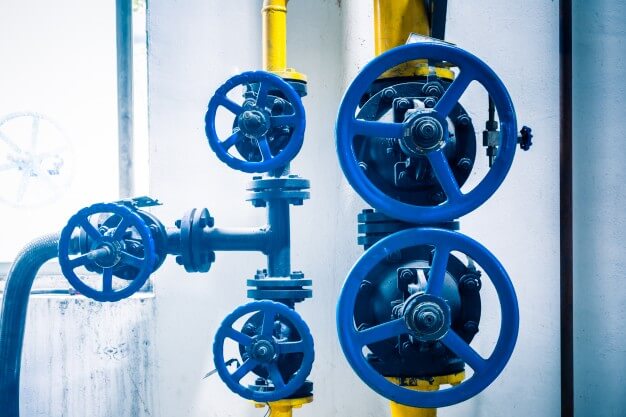What Are the Main Uses for a Vertical Turbine Pump?
A vertical turbine pump is typically classified as a centrifugal or rotodynamic pump. It is a highly versatile tool used in a wide variety of industrial applications. Vertical pumps can be configured to supply both high flow and high-pressure fluid outputs. These are typically multistage devices with multiple impellers embedded in the configuration. While vertical pumps are usually used in underground operations, they have some above-ground applications as well. Here is an overview of the pump, how it works, and the most common applications.
What Is a Vertical Turbine Pump?
A vertical turbine pump is designed to move fluid from an underground reservoir, pit, or well to a spot above ground. Unlike other pumps, these vertical pumps are linked to a surface device through a long shaft device. Pumps are comprised of a head, motor, multiple stages, and columns to contain the shaft. The pump’s engine can be housed on the surface, making device repair more straightforward and convenient.
What Are Common Vertical Pump Applications?
A vertical turbine pump is used in various industrial, construction, and agricultural applications. These pumps are commonly used in applications that require clean water, typically industrial pump services. Turbine pumps transport water from underground wells to residential home faucets, water treatment plants, and sprinkling systems. The water transported generally is too far down to be procured without the assistance of a long shaft.
A distinct advantage of a vertical pump is its adaptability. Vertical pumps are routinely used instead of submersible pumps because they can produce a more robust water flow output. High-pressure versions can produce up to 30,000 gallons of water per minute. Low-pressure adaptations typically generate 100 gallons of fluid per minute. These pumps can be constructed with various stages, producing the pressure needed for an individual application.
Unlike many other types of pumps, the motor can be housed on the surface. Non-electrical motors can be used to produce the pump’s rotational power. Therefore, vertical pumps are a good option for a construction site without ready access to an electrical power source.
Are There Irrigation Applications for Vertical Turbine Pumps?
Irrigation applications for vertical pumps are becoming increasingly common. Many municipalities require groundwater to provide water to local homes, farms, and businesses. Vertical pumps can supply liquid to agricultural fields or homes for watering purposes. One pump is sufficient for numerous acres as it can provide water at an incredibly high volume.
Vertical pumps can also act as a booster for other pumps when outputs need to be increased for a specific project. City water systems may use a turbine pump to supplement the existing water distribution system.
What Are Other Vertical Turbine Pump Applications?
An uncommon but convenient application for a vertical pump is running it in reverse to generate hydraulic power. When used to generate power, the suction housing acts as the pump’s outlet, and the discharge housing serves as the pump’s inlet. While it can be convenient to use a vertical turbine pump to generate power, operators should check with the manufacturer before to ensure there are no safety issues.
What Are the Advantages and Disadvantages?
There are several advantages to using vertical pumps. While some industrial pumps use a large amount of energy, vertical turbine pumps have a small carbon footprint because there are generally no priming issues. The impellers are constantly covered in fluid, providing adequate moisture to the device. Furthermore, these pumps are versatile, easily customizable, and can effectively be used in high and low-flow applications.
Another distinct advantage is that vertical pumps can be housed in tight spaces, making them an ideal device for use in environments with size restrictions. Further, most pump base materials can be upgraded or improved with minimal effort and expense. Pumps can be repaired quickly and inexpensively, maximizing the pump’s life and decreasing the cost your business incurs replacing outdated equipment.
One disadvantage is the fact that these pumps require a lot of headroom for installation and repairs. Additionally, it can be challenging to balance the pump’s hydraulic thrust because of its overhang design. This design feature can be a particular challenge in high-pressure or high-stress industrial applications.
Work With an Expert
Vertical pumps are versatile devices that can be used to pump high volumes of fluid for a wide variety of applications. Zone Industries designs, installs and maintains motors, pumps, and controls. We specialize in industrial pump services and vertical turbine pump repair and installation. Don’t wait any longer to find the ideal pump supplier for your industrial or agricultural needs. Contact us today to find the perfect vertical pump to grow your business.
What Are the Main Uses for a Vertical Turbine Pump? | Zone Industries


